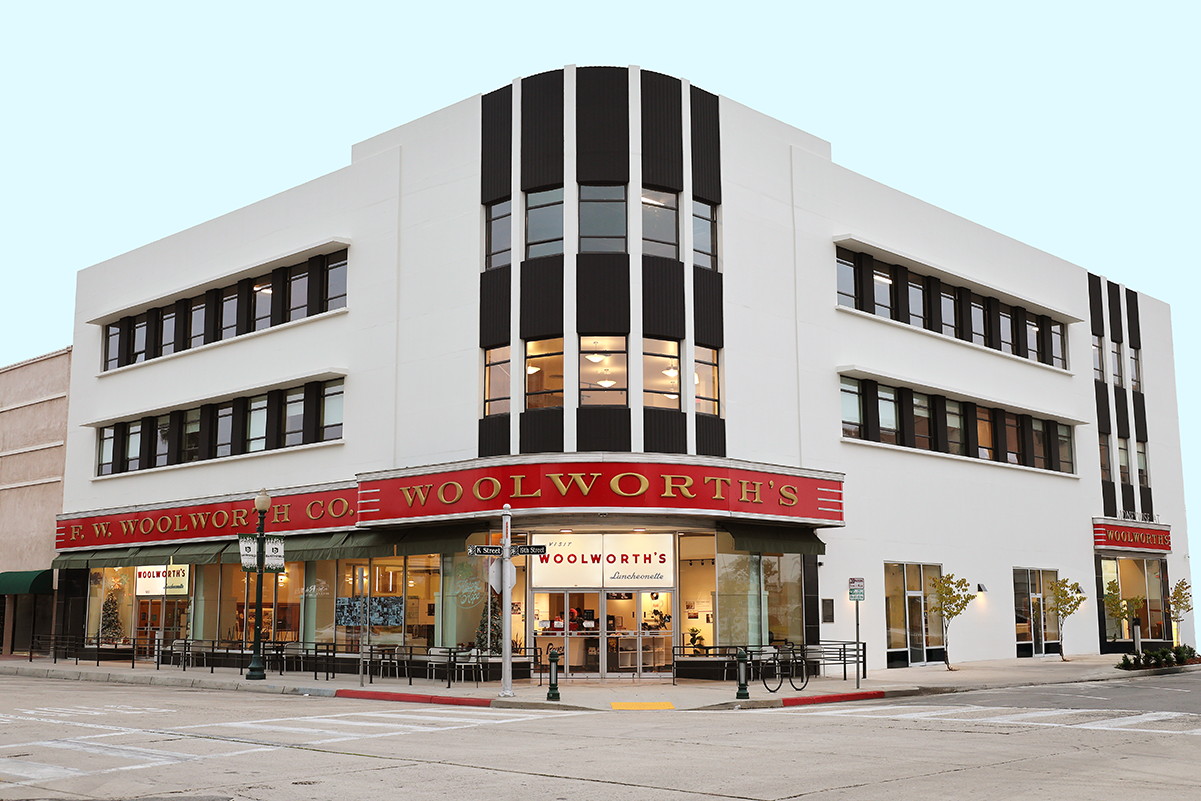A Counter Remembered
How the restoration of Bakersfield’s Woolworth’s lunch counter preserves the legacy of the Civil Rights Movement and those who sat, and stood, for change.


It wasn’t a protest site. No picket lines formed here. No arrests were made. But the Woolworth’s Building in Bakersfield still holds a quiet power, rooted in one of the most transformational movements in American history.
When the building’s iconic lunch counter was revisited, the effort went far beyond restoration and revitalization. It was an act of cultural preservation, and a chance to carry forward a chapter of Civil Rights history that didn’t happen here, but still echoes through every inch of the counter.
In a feature with SFGATE, Dr. Cecil Brown, a writer, professor, and veteran of the original sit-ins, traced that echo back to February 1, 1960, the day four black students from North Carolina A&T walked into a Woolworth’s in Greensboro and sat where they weren’t allowed to sit. Brown was there, not yet one of the “Greensboro Four,” but a student stirred by the injustice of a simple sandwich denied.
“I remember the student who later became one of the first four,” Brown told SFGATE. “He was arguing, crying the blues about getting a hamburger and having to go around the back.” That small moment, rooted in the most ordinary of hungers, helped spark one of the most extraordinary nonviolent movements in U.S. history.
Brown later joined the protests himself. What struck him most wasn’t the confrontation, but the kindness. “An older white woman came over and put a hand on a shoulder and said, ‘I’m proud of you,’” he recalled. “That’s what nobody could’ve imagined.”
Today, Brown is working with Sherod and Emily Waite (the husband-and-wife team behind the Woolworth’s Building restoration) to ensure the Bakersfield luncheonette serves not just burgers and fries, but memory.

While this location was not a sit-in site, it was one of thousands of Woolworth’s lunch counters that formed the backdrop of segregated American life. These counters went beyond being places to eat, they were public stages where justice — and injustice — was performed daily.
“We didn’t see why it was so important to confront it at that time . . . But when [our classmate] went down, we followed.” Brown noted.
Now a professor who has taught at both U.C. Berkeley and Stanford University, Brown brings a scholar’s insight and an activist’s heart to the Woolworth’s Building revival in Bakersfield. “I see and feel every moment,” he says, standing inside the space. “My goal is to make sure people don’t just hear the story — they feel it.”
And there’s plenty to feel. The counter, the stools, even the pink rose mirrors (all restored to their former glory) offer more than aesthetic pleasure. They’re tactile reminders of who got to sit, and who didn’t. Of what it meant to be welcome, and what it means to be refused.
For Sherod Waite, the restoration carries personal and civic meaning. “The Woolworth’s Building belongs to the community,” he says. “We’re just stewards of its legacy.”
In that sense, the Bakersfield counter becomes something more: a site of remembrance, reflection, and resilience. A place where history can be honored and, most importantly, felt.


